Polar equation:
Cartesian equation:
Rational quartic.
| next curve | previous curve | 2D curves | 3D curves | surfaces | fractals | polyhedra |
FOCAL CONCHOID OF A CONIC
| For a conic with eccentricity e and parameter
a, and a conchoid with modulus ka:
Polar equation: Cartesian equation: Rational quartic. |
The focal conchoids of conics are the conchoids
of conics with respect to one of their foci.
| Case of an ellipse |
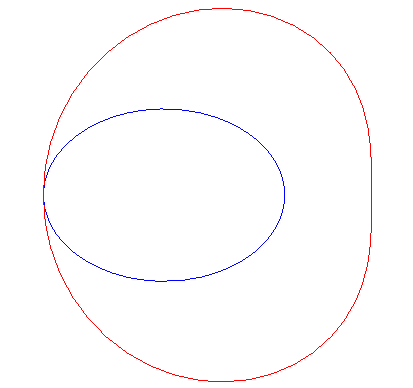 |
| Case of a parabola |
 |
| Case of a hyperbola |
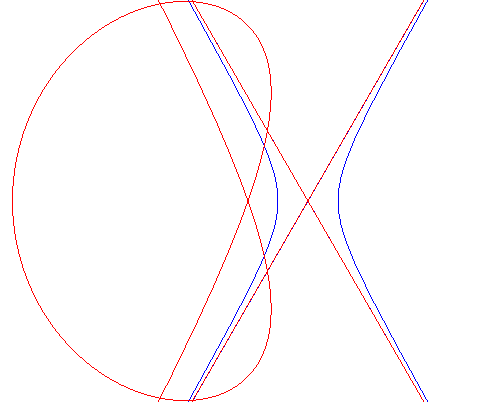 |
| When |
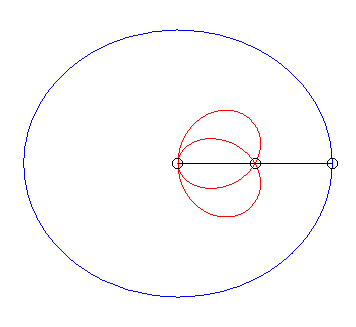 |
| When k = –1 (i.e. when the modulus of the conchoid is the opposite of the parameter of the conic), we get the curves with a double point where the tangents coincide. | 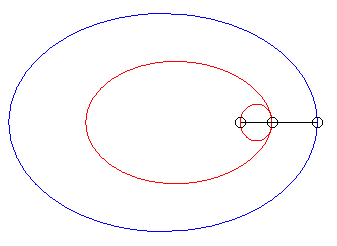 |
| When |
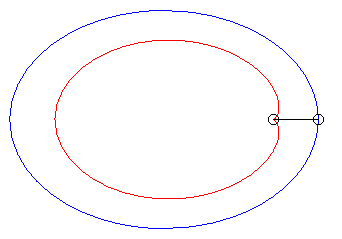 |
| A conchoid of a parabola with k = –1 arises in
the problem of determining the triangles such that the intersection of
the median passing by a vertex, the altitude passing by another, and one
of the bisectors passing by the last is not empty.
When the side cutting the median line is fixed, the opposite vertex describes a conchoid of a parabola (in red, opposite); the extremity of the bisector describes a torpedo, the intersection point, a strophoid (in light blue, opposite), and the extremity of the altitude, of course, a circle. |
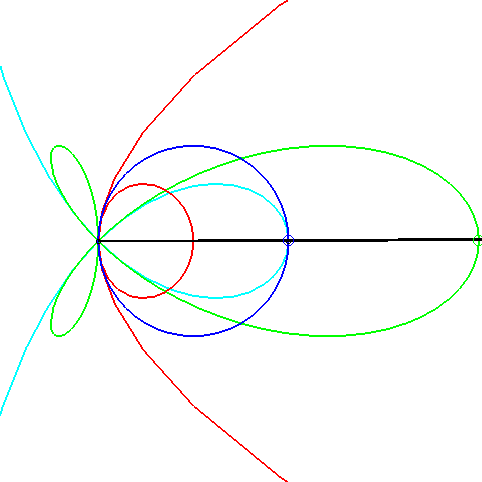 |
| next curve | previous curve | 2D curves | 3D curves | surfaces | fractals | polyhedra |
© Robert FERRÉOL
2017